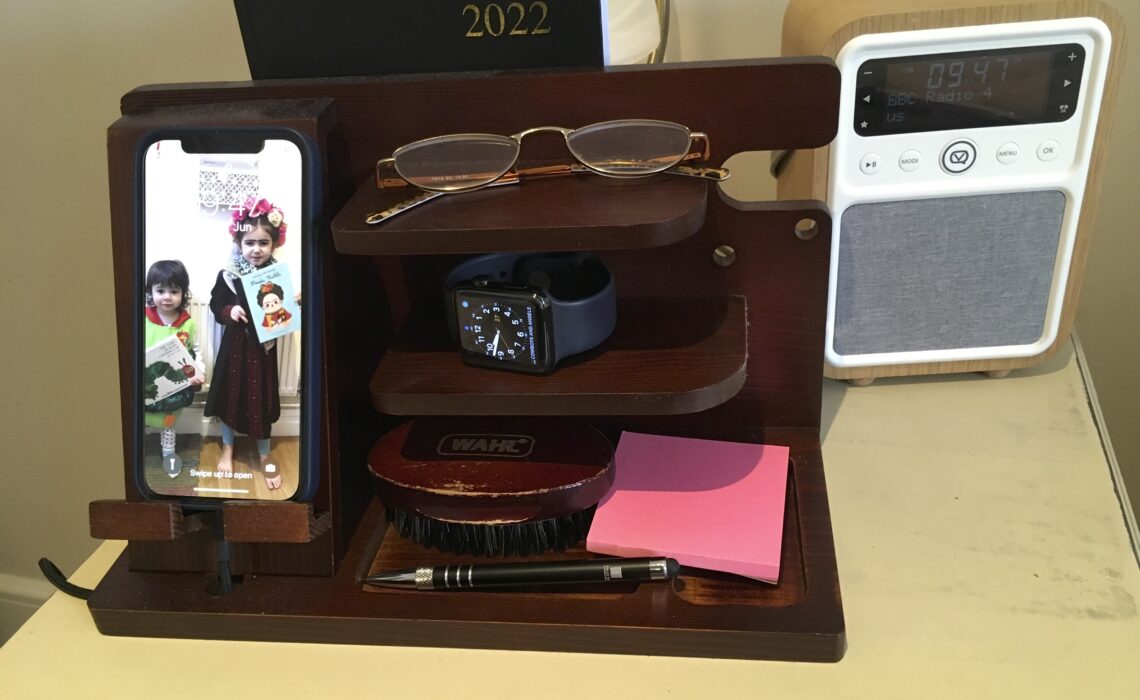
What do you think would happen if you left a child in a room with an age-appropriate new toy? CORRECT! They would just pick it up and try to work out how to play with it.
Observing my own grandchildren (two girls and one boy) from say, the age of 15 months onwards, they all did the same thing. Nearer 15 months, they pick it up, inspect it, try to further identify it by tasting it before they finally discover that it is intended to be thrown on the floor to make a noise they find attractive. As they grow older, they gradually refine their appreciation of the plaything.
This gradual refinement of understanding how to make best use of the newly acquired toy comes from the adults explanation, watching older children, and accumulation of their own experiences. They see cash registers in supermarkets so when they lay their hands on a toy register, they have a good idea how to make it ring, light up or open the cash drawer. They observe how adults sweep floors, iron, drive a car etc., and feel confident they could do the same when presented with toys that resembles such tools.
The one thing a child will not do is search for an instruction manual; they are naturally inclined to attempt trial and error, observe older children, or follow simple and brief explanations by parents.
Suddenly, something happens that takes away the joy of personal discovery, resorting to badly written and/or illustrated instruction manuals; we just want to get the thing going in the shortest span of time. We are also warned with dire consequences, if we attempt to use an appliance before thoroughly reading the safety and operation instructions.
This begs the question: why sell stuff that is likely to kill or maim us unless we follow a specific and narrow method of application? What’s worse is that some manufacturers have a range of similar products and you have to navigate your way through a ‘War and Peace’ sized manual to work out how to operate your own version of the product.
I was recently given a birthday present which consisted of a flat pack that had about eight flat and polished wooden pieces all different shapes and sizes. The present also included 12 screws and a small Philips screwdriver. Nothing else; no assembly instructions, no stage-by-stage diagrams, not even a final picture of the fully assembled contraption. My first reaction is to rummage through the packaging again to see if I missed anything else, I hadn’t. My next step was to go on the internet and see if I can locate the manufacturer, no joy there either. I gave up and left the whole pile to languish on my desk for a few days.
Finally, I sat down and did what any child would do, pick up a couple of pieces and see if they fitted together in any sensible way. I carried on with this trial & error for a while and finally worked out what it was supposed to be. This made me feel better which motivated me to carry on. Two hours and a few mistakes later I had my toy ready to play with. This gave me quite a buzz. You can see the end result in the picture above.
It also reminded me of a couple of experiences I had in the past. The first one involved my father who made it his challenge in life to operate or assemble things without a manual and considered it a significant defeat if he had to resort to reading accompanying instructions. He repaired electrical appliances, stripped car engines, assembled factory production lines without reverting to makers’ manuals. The second experience was putting together a garden greenhouse. Claire and I went to the local garden centre, found one that fitted our limited garden space and tight budget, paid for it and the whole thing was given to us in convenient flat packs. I woke up early on Saturday and went straight to the garden. Located the manual which ran into dozens of pages, and began to assemble the sides, the roof, and the door. Nothing fitted! The aluminium frame and glass panels would not cooperate and fit together. I started all over again and made doubly sure I read the instructions very, very carefully. Learning from my initial mistakes, my multiple attempts were inching me towards ultimate success. However, I had already spent about 6 hours when the claim in the manual was one person could complete the task in one hour. I was getting irritated, hungry and frustrated. Claire came to check on me a couple of times and reminded me we had visitors that day (her sister Caroline with husband Pedro and two young children). This added more pressure on me to get the damn thing put up and mess cleared before the visitors arrived.
Pedro did not believe in instruction manuals. He took one look at my handy work, had a laugh at my expense, pushed me aside and proceeded to assemble the thing with such speed and accuracy, it made me feel like a complete moron. I consider myself to be reasonably practical, I have an engineering degree and my spatial awareness is quite good. With the aid of a manual, I reckon I can build or operate anything. But Pedro could do these things and more without the aid of instructions.
My point is that we are born with the ability to work things out by deduction, intuition and trial & error. However, as we grow up, first our parents, then the education system knocks these three in-built capabilities out of our repertoire of skills. Referring to manuals and instructions continues with us for the rest of our lives. In my first job after university, it was a virtue to follow the RTFM principle and therefore, something of a stigma not to do so. RTFM was the acronym for ‘Read The F***ing Manual’.
In every kitchen of every household there are recipe books that list the ingredients, together with weights & measures, as well as step by step instructions on how to turn the ingredients into a wonderful creation. Occasionally, I get asked “how do you make ..” so helpfully, I give the ingredients with a rough directions on how to bring them together. This irritates and, I am sure, frustrates people because I leave out the measures and detailed methods. The truth is I have no idea what the measures are and how long I should whisk the egg white for.
As I said earlier, most of us lost the intuitive sense of how to navigate through life. So, I raise my hat to the Pedros of this world who refuse to be led by the hand through every challenge they meet and opt to use their intuition and possess the courage to risk failure.
Next time you find yourself on a flightdeck, go ahead, push a few buttons, press some pedals and pull up that joystick. What’s the worst that can happen?
Mufid



Spare a thought for those of us with dyspraxia! Putting together an object without a manual feels like being a monkey being asked to write its name. Agree on the cooking though!
Pedro still hates using manuals, as he says he
Understands how things work better if he has to deduce things for himself. Not sure I would trust him in the pilot’s cockpit though!
Mufid, you still make me laugh.
I agree I never made sense of manuals, they get on my nerves.
I press buttons, make those mistakes, screw these things the wrong way and unscrew them until I get them right, sometime it takes me months if I keep bothered to do it again.
I am actually sitting in front of an unassembled toy for the kids, it is sitting there for the last 2 years, I just gave up, and still refuse to look for the manual.